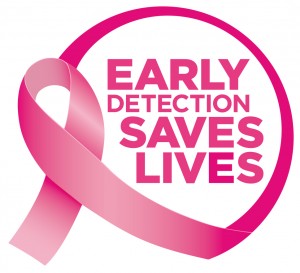A cancer is named based on where it first develops. Breast cancer begins in the breast tissue, eventually forming a mass of cancerous cells called a tumor. Cells from that tumor can break away and spread (called metastasis) to other organs of the body – such as the lymph nodes, bones, lungs, and even liver—where they can multiply in number.
Even though the causes of breast cancer are not known, early detection and newer treatments are leading researchers toward a cure. Researchers have identified certain risk factors that have been associated with breast cancer. Knowing these and determining an individual’s risk are the first steps toward breast cancer protection.
It is almost impossible to predict whether or not a woman will be diagnosed with breast cancer – some women can have all the risk factors and never develop the disease while other women develop the disease and do not have many of the known risk factors. As with all diseases, there are certain factors that place some women at higher chance of developing breast cancer than others. Some risk factors can be controlled while others cannot.
Certain steps can be taken to reduce the risk of breast or other cancers. Cancer experts recommend eating a balanced diet that includes plenty of fruits and vegetables and is low in saturated fats. For those who consume alcohol on a daily basis, they should speak with their doctor about personal risks for breast cancer and heart health. Avoid weight gain, particularly after menopause and exercise to maintain a healthy weight.
While getting an annual mammogram is crucial, 10 to 15 percent of breast cancers are not detected by the test and additional breast cancers may also become detectable between routine mammograms. That is why it is important for every woman to perform her own breast self-exam every month in addition to getting a yearly mammogram or clinical breast exam. The best time for a breast self-exam is roughly seven days after the beginning of a monthly menstrual cycle, because this is when the hormone levels from the ovaries are at their lowest and breasts are least likely to be tender or swollen. Women who have gone through menopause should examine their breasts the same day each month, such as on the first day of the month.
Screening refers to tests and exams used to find a disease in people who do not have any symptoms. Breast cancers found during screening exams are more likely to be smaller and still confined to the breast. The size of a breast cancer and how far it has spread are some of the most important factors in predicting the prognosis of a woman with this disease.
The Center for Diagnostic Imaging and the Comprehensive Breast Care Centers specialize in the early detection of breast cancer. The fully trained staff and board certified radiologists utilize the best medical imaging solutions available today, such as breast ultrasound, breast MRI, and 3D mammography. They insure that each exam is tailored to each patient’s individual needs.






